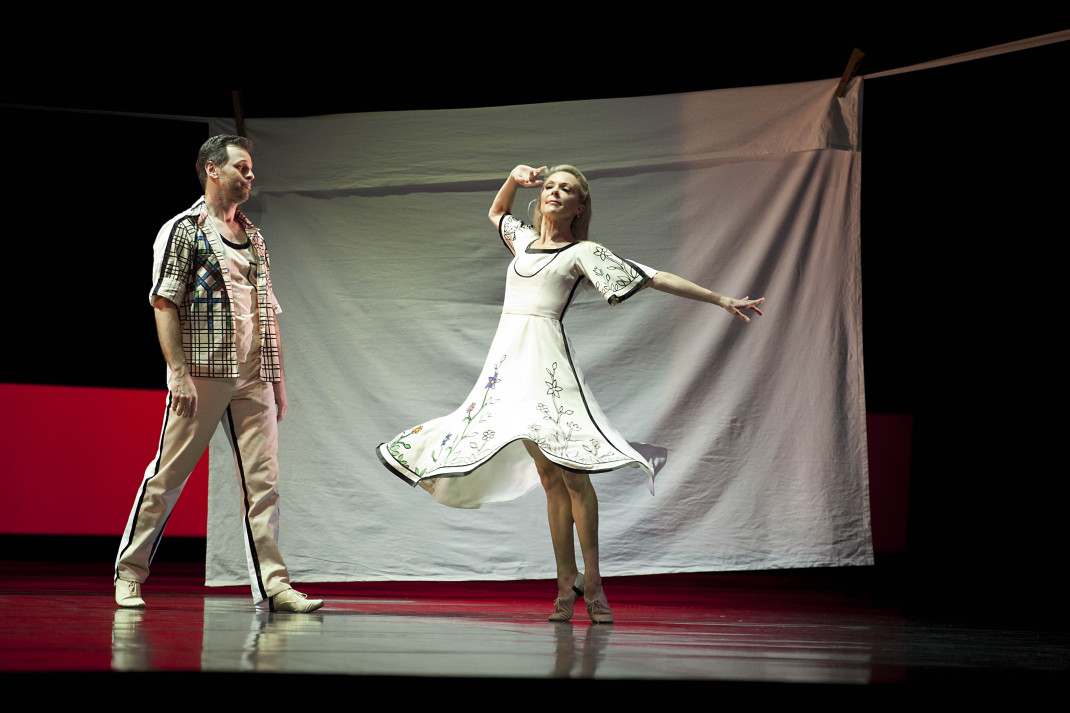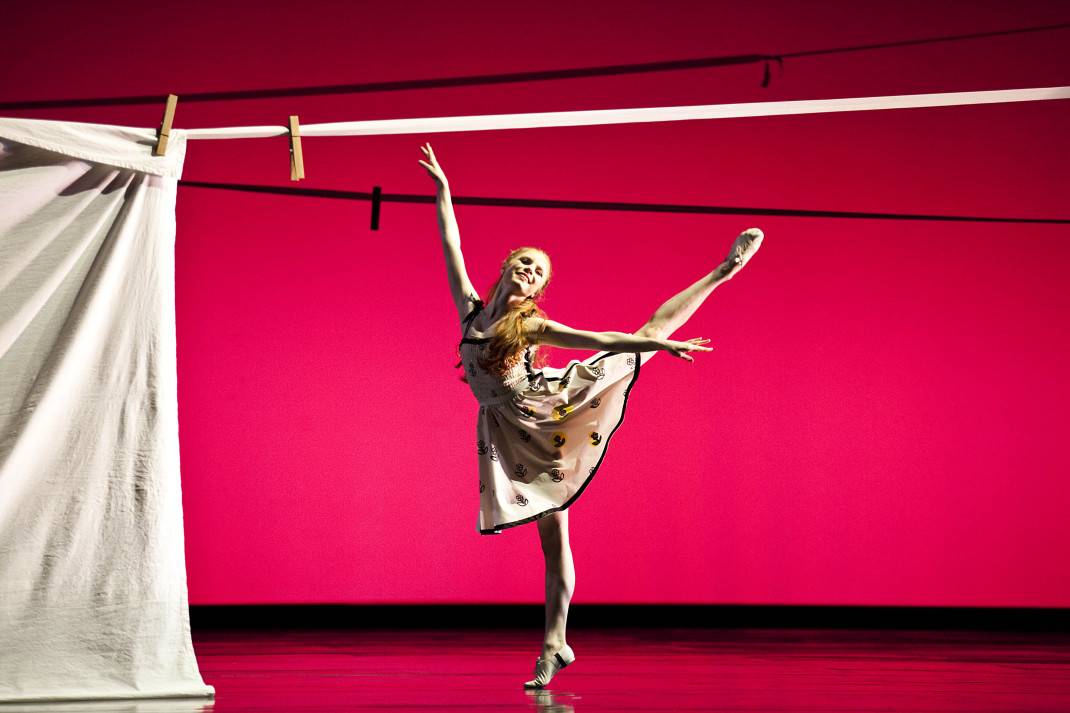16 June 2012, State Theatre, Victorian Arts Centre, Melbourne
Let’s dance is the program that the Australian Ballet commissioned to cover the time while the main company was busy ‘taking Manhattan’. It is, on the surface, a commendable venture giving subscription audiences the opportunity to see the array of dance styles being created and performed across Australia—there’s more to dance than the Australian Ballet. But as a program I am not sure that it worked as well as we might have hoped. It turned out to be a bit of a mish-mash and there was also some choreography that I found lamentable. Perhaps the program needed some overarching curatorial plan to give it at least some thread of cohesion?
What follows is not so much a review as a series of thoughts on various aspects of the show.
- Choreography
I really liked Natalie Weir’s choreography for Don’t made on Expressions Dance Company. Weir’s particular strength, I think, lies in her skills in working on partnerships, whether for two people or more. For Weir a body held upside down has as much value as one held the right way up and what results has always taken the eye, slowly and calmly, in new directions. It’s a shame, I think, that the Australian Ballet has never restaged Weir’s Dark Lullaby, which is definitely worth another look. Too close to Ross Stretton perhaps?
Tim Harbour’s choreography for Sweedeedee was another highlight, not because it was hugely innovative but because he found a way to make two older dancers (‘stars’ is a better word probably for Justine Summers and Steven Heathcote), and two emerging younger dancers (Mia Heathcote and Lennox Niven from the Australian Ballet School) appear together and look as though they all belonged in the work. It was simple, clear movement that told the homey, folksy story well.

I honestly could have done without Dance North’s Fugue, which was choreographed by Raewyn Hill and which I thought looked like nothing more than a clump of limping dancers engaged in the same moves over and over again. If you read the program notes there is a reason behind the choreography looking the way it did as the work reflects, apparently, a 16th century European ‘dancing plague’. But it was certainly not to my taste, neither aesthetically nor theatrically (despite the Sass & Bide costumes).
- Dancers
I love watching Sydney Dance Company’s dancers, on this program dancing an excerpt from Rafael Bonachela’s recent work, 2 one another. His dancers have such clean lines in their movements. Nothing is murky or foggy, each tiny aspect of a movement is clear. Chen Wen particularly stood out for me in this program, although he often does. I love so many technical things about how he dances, especially the way his legs, so straight, stretch into infinity, and the way that, when he tilts the body forward, he maintains the strength of his back as he does so.
As for Mia Heathcote who played the Girl in Harbour’s Sweedeedee, if things go well for her as I hope they do, she has all the makings of a future star. It has been a long time since a dancer has given me goose bumps, but this member of the Heathcote family did before she had even danced a step. I look forward to following her career.

- Design
The designer whose work I most admired was Lexi George whose simple, white costumes, patterned with black designs, for Sweedeedee were so appropriate for the piece. Their simplicity belied their elegance. I also liked Bill Haycock’s black and white dresses for the women in Don’t with their variations in length, fitting and general style. Again Natalie Weir is moving in a well-considered direction with her ongoing commissioning of Haycock.
As for lighting I enjoyed Benjamin Cisterne’s designs for both 2 one another and Sweedeedee. Like much else that I liked about this show, his lighting designs were spare and clear. I especially admired the changing, neon-style, vertical columns of light that accompanied the Bonachela piece. Very smart and modernistic and in keeping with Bonachela’s choreography.
- Appeal
Two works had appeal that invited little analysis: Ivan Cavallari’s Ombra leggera danced by two artists from West Australian Ballet, and Francois Klaus’ excerpt from Cloudland, danced by two artists from Queensland Ballet. Both were charming, if light pieces and were nicely executed.
- What else?
Tasdance contributed a short film, Momentary, with choreography by Anna Smith, and Australian Dance Theatre was represented by an excerpt from Garry Stewart’s Be your self. Neither really fitted well into the program. Which goes back to my original comment: the program needed a curator. This is not to say that the works had no merit. Stewart, as ever, gave something that required intellectual as much as dancerly input and his dancers, like those of Sydney Dance Company, have extraordinary physical capacity. But Stewart, to his credit I have to say, is out on his own really and looks best by himself.
Michelle Potter, 17 June 2012